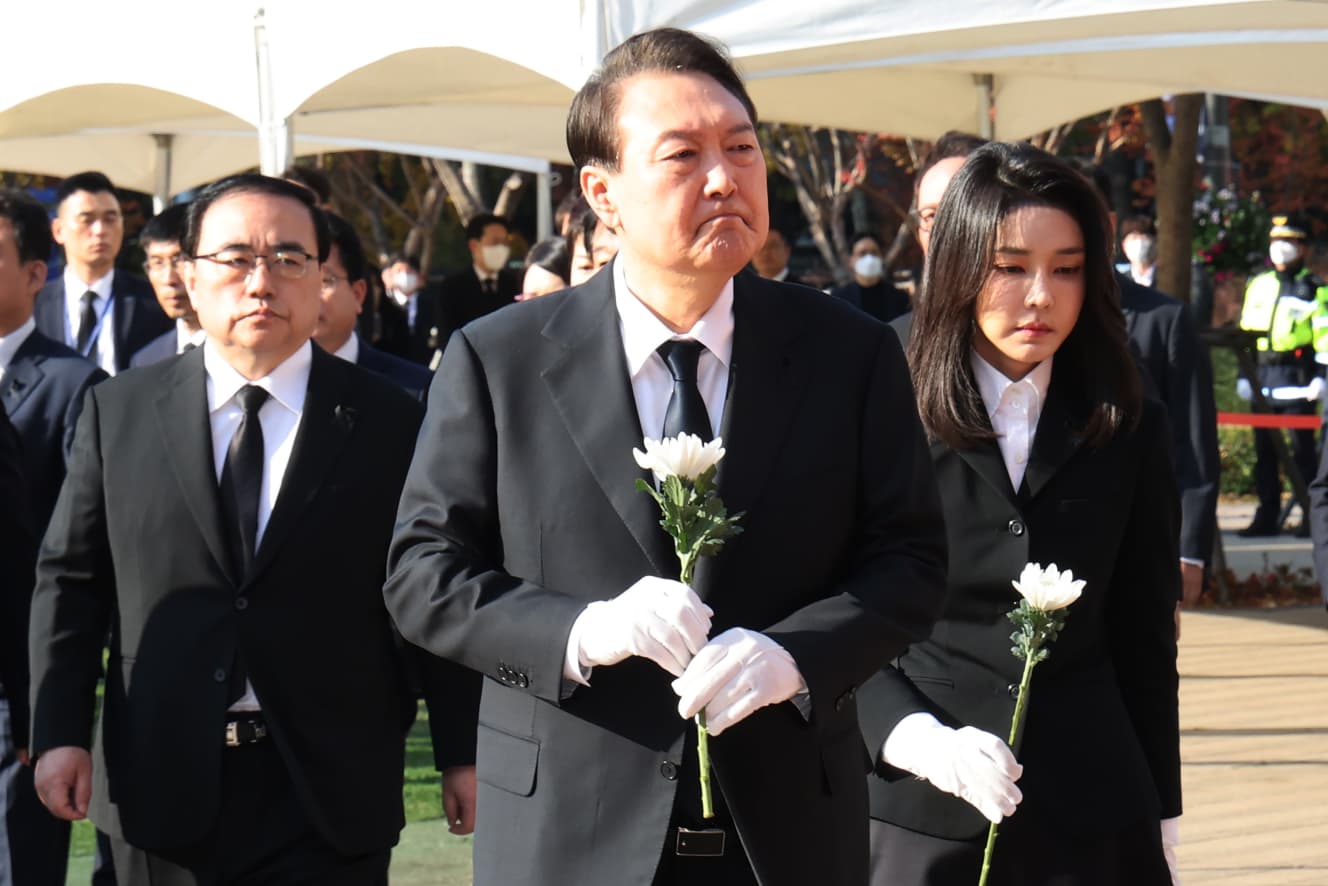137 People in a Crowd of 130,000! Reason for the Seoul Massacre Super-Light Security Stunned
“Don’t push! Go back!”
“People will be crushed!”
The joyful atmosphere of Halloween that had enveloped the downtown area was suddenly transformed by the fear of death.
The catastrophe occurred in Itaewon, a popular spot for young people in Seoul, South Korea, just after 10 p.m. on October 29. Crowds poured into a narrow street 3.2 meters wide and 40 meters long near the subway station. More than 150 people, including two Japanese, lost their lives (as of October 31).
“The site seemed to be so overcrowded (more than 10 people to a square meter) that bodies floated to the surface. Moreover, it was a slope with a 10% incline and many steps, which made it easy for people to fall down. Despite the dangerous conditions, the crowds came pouring into the street, one after the other. People collapsed like waves collapsing on top of each other, and then people covered them from above, crushing many to death,” said a Korean newspaper reporter.
President Yun moved quickly to calculate.

President Yun Suk-yeol moved quickly. Before dawn on January 30, he entered the Crisis Management Center of the Presidential Office, where he expressed his top priority in dealing with the situation, saying, “A tragedy and a disaster that should not have happened has occurred.”
However, it seems that behind the move was the calculation that we don’t want to follow the example of past administrations. Korea Report editor-in-chief Shinichi Hen explains.
The Sewol disaster that occurred in April 2002 left more than 300 people dead or missing. The then President Park Geun-hye was out of communication for about seven hours after the accident, and the scene was in chaos. The delay in the initial response caused the damage, and the incident was heavily criticized. According to one theory, she was secretly meeting with a man close to her. The Sewol incident contributed to the resignation of the Park administration.

The accident could also be fatal for President Yun. Due to the new coronavirus, Halloween events have been in a mood of self-restraint since 2008, but this year, for the first time in three years, business restrictions were eased. According to South Korea’s KBS TV, only 137 police officers were deployed on the day of the event, despite the 130,000 people who visited Itaewon.
Mr. Byeon continued, Moreover, the purpose of security was not to control traffic.
The purpose of the security was not to control traffic, but to detect drunken fights and voyeurism. There were two reasons why security was so inadequate: first, there had been a number of anti-government demonstrations in the neighborhood over the past few days, and second, there was a lack of personnel to deal with the demonstrations. It seems that personnel were allocated to deal with the demonstrations.
The second is the Presidential Office, which was relocated when President Yun took office in May of this year. The new presidential office is located near the accident site. North-South relations with North Korea have been strained in recent years. Both sides have planned a beheading operation, which implies the assassination of the other side’s top leader, so security has tended to be biased toward the presidential office. On top of that, I hear that the police officers were exhausted from working night shifts day after day.
After the accident, the Yun administration increased the number of security guards from 137 to approximately 2,000, more than ten times as many as in the past, to handle the aftermath. However, this response seems to have provoked a public outcry.
If they could have mobilized 2,000 guards, why didn’t they have them do it from the beginning? The criticism is that the accident was a man-made disaster caused by neglecting security. The security arrangements are well symbolic of the Yun administration’s approval rating, which continues to hover at a very low level of around 30%. They have concentrated security at the Presidential Office and put their own safety ahead of the lives of the people. There is no reason for the public to trust them.
President Yun will be called upon to get to the bottom of the accident. However, the facts that come to light will deal a major blow to his administration.



Photo: Reuters/Afro AP/Afro
